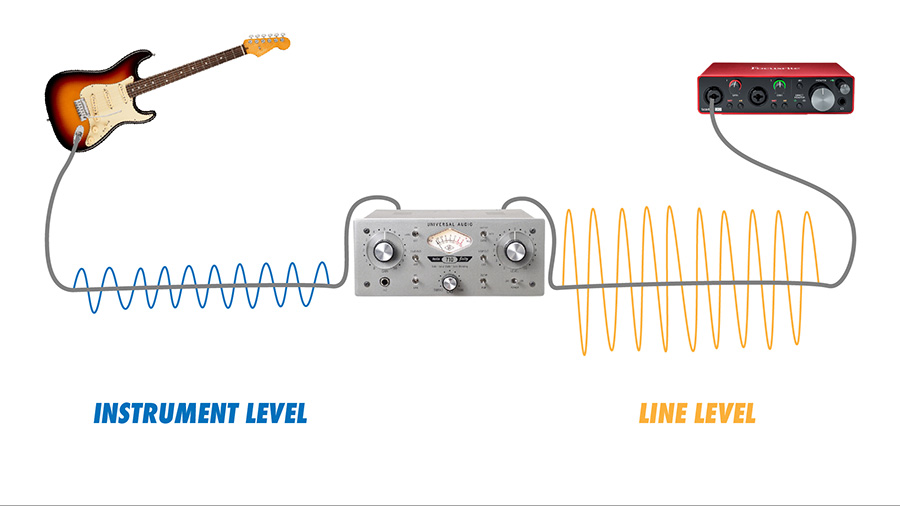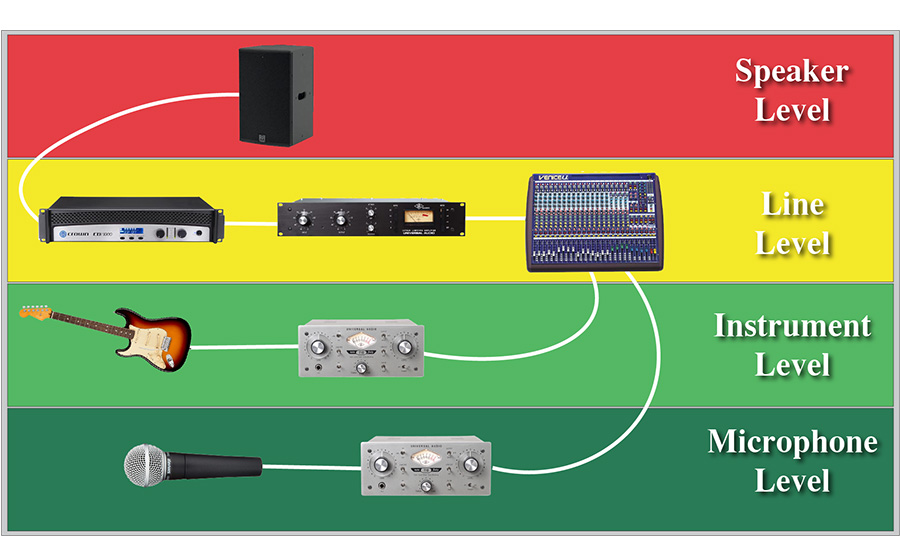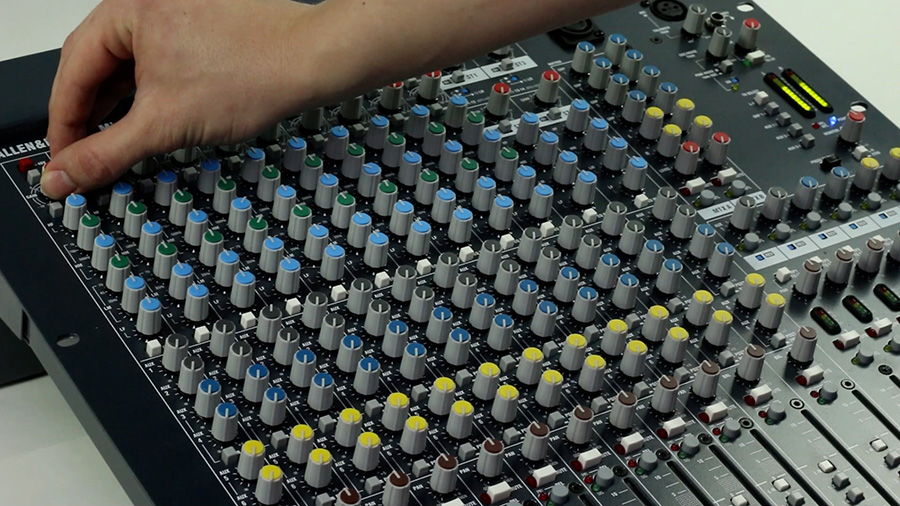What Is a Microphone Preamp?
A mic preamp boosts the level of the signal before it is sent to a recording device or mixer. This is necessary because microphones produce very weak signals, known as mic level, which typically ranges from about -60 to -40 dBV. The preamp amplifies the signal to a level at which it can be properly recorded, processed, or amplified throughout the signal chain.

A microphone preamp, also known as a mic pre, can be found in almost every recording studio or live sound system.
In addition to mic level audio, it’s also important to understand instrument level and line level. Instrument level audio is slightly greater than mic level audio, and is produced by instruments like electric guitars. It typically ranges from about -40 to -20 dBV.

Line level is the standard for professional equipment like mixers, amplifiers, and outboard gear, at around 0 dBV. As mentioned, a preamp can be used to bring a mic level or instrument level signal up to a line level signal for mixing.
It’s important to note that these ranges are just rough estimates and the actual level of a signal can vary depending on the specific device or instrument being used. In any case, a basic understanding of mic level, instrument level, and line level is important in order to properly record, process, and amplify audio signals.

Mic preamps can be built into audio interfaces and mixing consoles, but you can also integrate outboard preamps into your system. In the case of an outboard preamp, you will connect a microphone directly to the preamp and then connect the output of the preamp to the line level input of an audio interface or mixer.
There are both solid-state and tube-based preamps and each type has its own distinct sound. Solid-state preamps are known for their clean, transparent sound, while tube preamps tend to add warmth and character to the signal.
One important feature of a high-quality mic preamp is to provide clean, low-noise gain to the signal. The circuitry in a preamp is designed to minimize any unwanted electrical noise or hum. This is especially important when recording vocals and other quiet instruments, as even the slightest bit of noise can ruin an otherwise great recording. As you layer or stack multiple tracks, this noise can add up. So, while a noisy preamp may not be an issue for a single-track recording, it can become more noticeably problematic in multitrack sessions.

As you increase the gain knob on a mic preamp, the signal level increases, but so does the level of the noise within that signal. Fortunately, most modern preamps have extremely low inherent noise levels.
Another important role of a mic preamp is to shape the sound coming from the microphone or instrument. Some preamps are incredibly transparent, meaning they don’t have a large effect on the tonality of the signal passing through them. Other preamps may have a noticeable effect on the frequency balance or other sonic characteristics of a recording. This can be a good thing or a bad thing, depending on the situation. The right preamp on the right instrument could add color and flavor to your recording.

This can be especially useful when recording a variety of instruments or sources, as it allows you to fine-tune the sound to fit the context of the overall mix. Having a collection of different mic preamps gives you more control over the sound of your microphones and instruments, allowing you to shape the tone and character of the signal to suit the needs of the project.
Because modern preamps are so high-quality, you can create professional-quality results using even the most affordable preamps. However, upgrading your preamp could provide you with more gain, more headroom, less distortion, less noise, and an overall improvement of sound quality that can help take your project to the next level.
You could even run signals through outboard preamps to add color and saturation to an existing sound, as if the preamp were an outboard compressor or EQ.
